Fairview
Mainstage Production, UNCSA 2024
Director: Jackie Alexander
Production Stage Manager: Ella Colbus
Scenic Designers: Isy Kessler and Jenna Lauren Carroll
Costume Designer: Aman Mundle
Wig, Makeup, and Nail Designer: Hope Medwin
Lighting Designer: Noelle Longenberger
Sound Designer: Lee Leon Martinez Cruz
Properties Director by Ross Stephens
Crew Credits
-
Combined efforts of Jenna Lauren Carroll, Gaby Hertel, Ben Hirschfield, Luka Jamroz, Isy Kessler, Hope Medwin, Aman Mundle
The conversation at the center of ‘Fairview’ concerns challenging audience members' perception of class, race, and privilege, as well as examining the role surveillance plays in the Black experience. At the center of the story are the Fraisers, who are a 21st century upper-middle class family living in the Oak Buffs, preparing to celebrate the birthday of their grandmother. The design of the family is intended to be personal and reflect the vibrant personalities of each member of the family. Beverly and Dayton’s palette display their unity as a couple and highlight their pride as HBCU alumni. Jasmine, Beverly’s sister, is the more free-spirited of the sisters and her costume is heavily inspired by Black fashion designers such as Kimberly Goldson and Andrea Iyamah. The pair’s contrasting aesthetics, silhouettes, and colors help to establish their contentious relationship. Keisha’s looks reflect current fashion trends of Generation Alpha and younger Generation Z to create a visual distinction between her and the play’s adults, and to amplify the upbeat and bubbly personality she displays in act 1.
Concept Statement
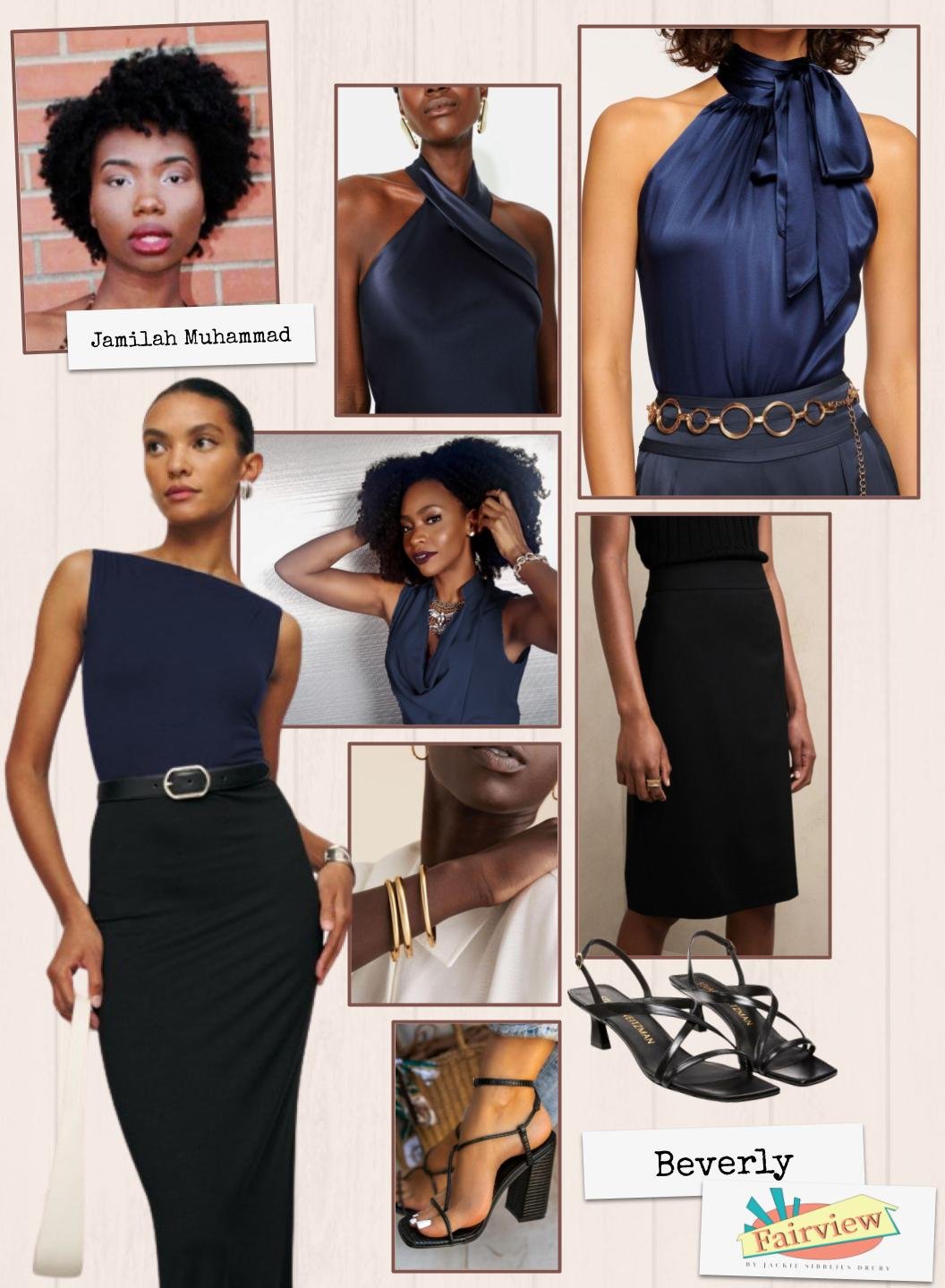

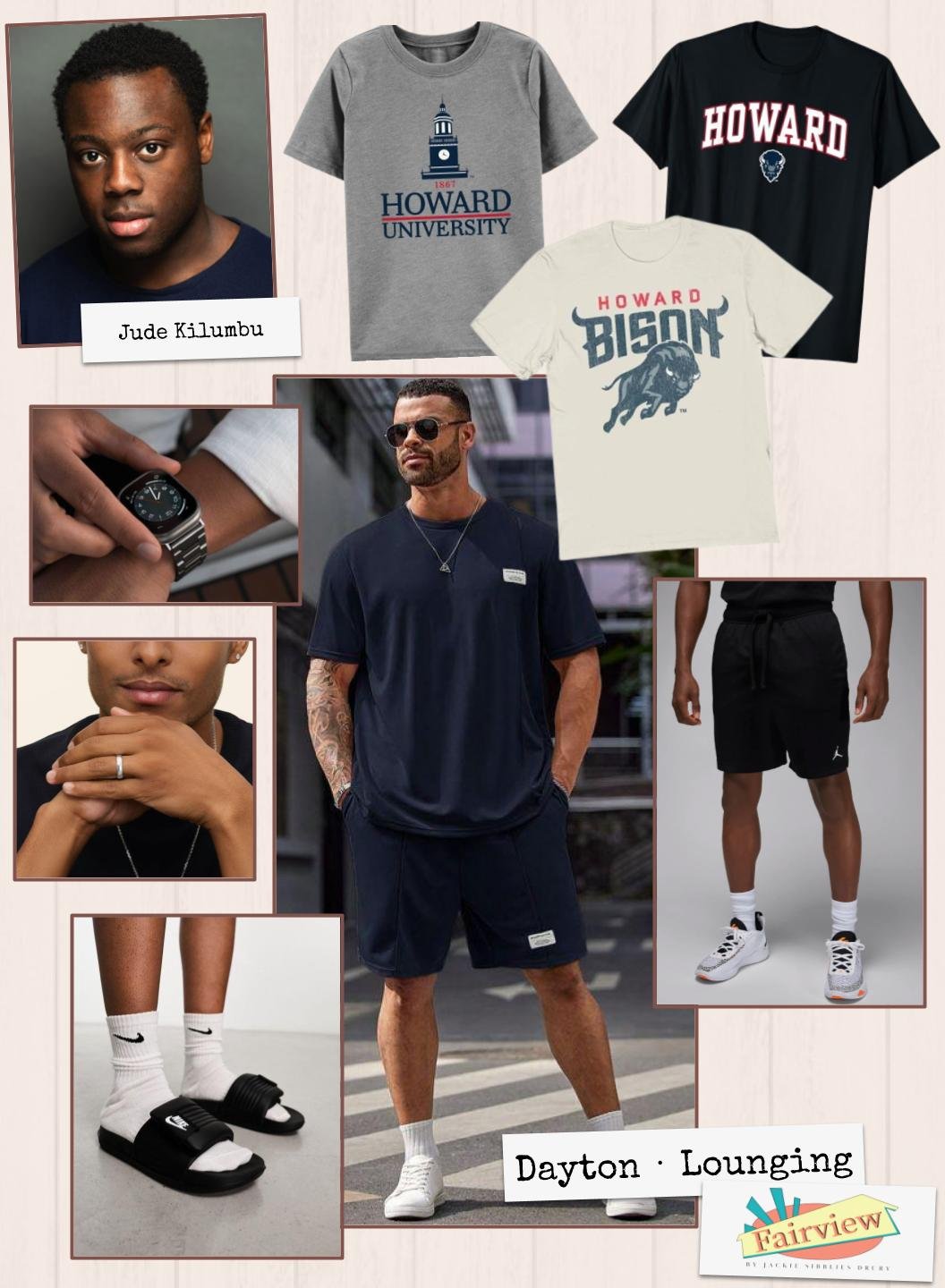
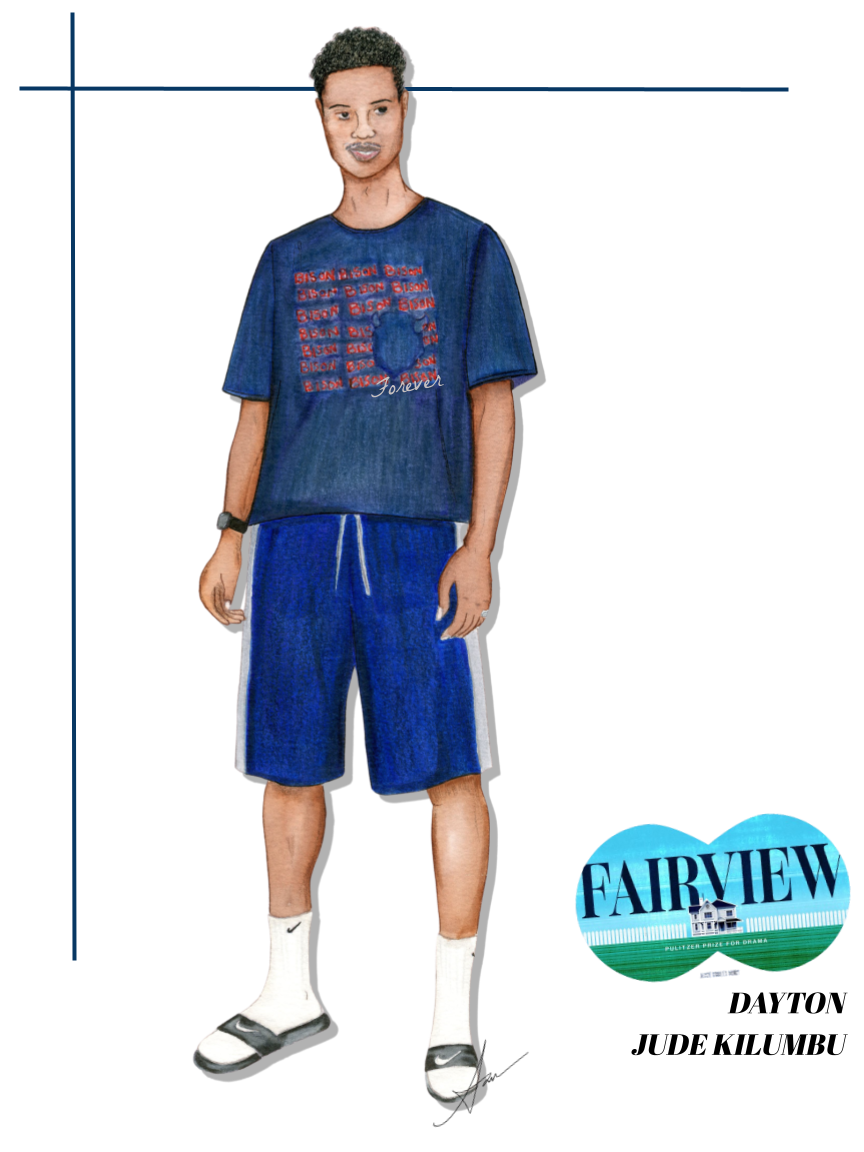


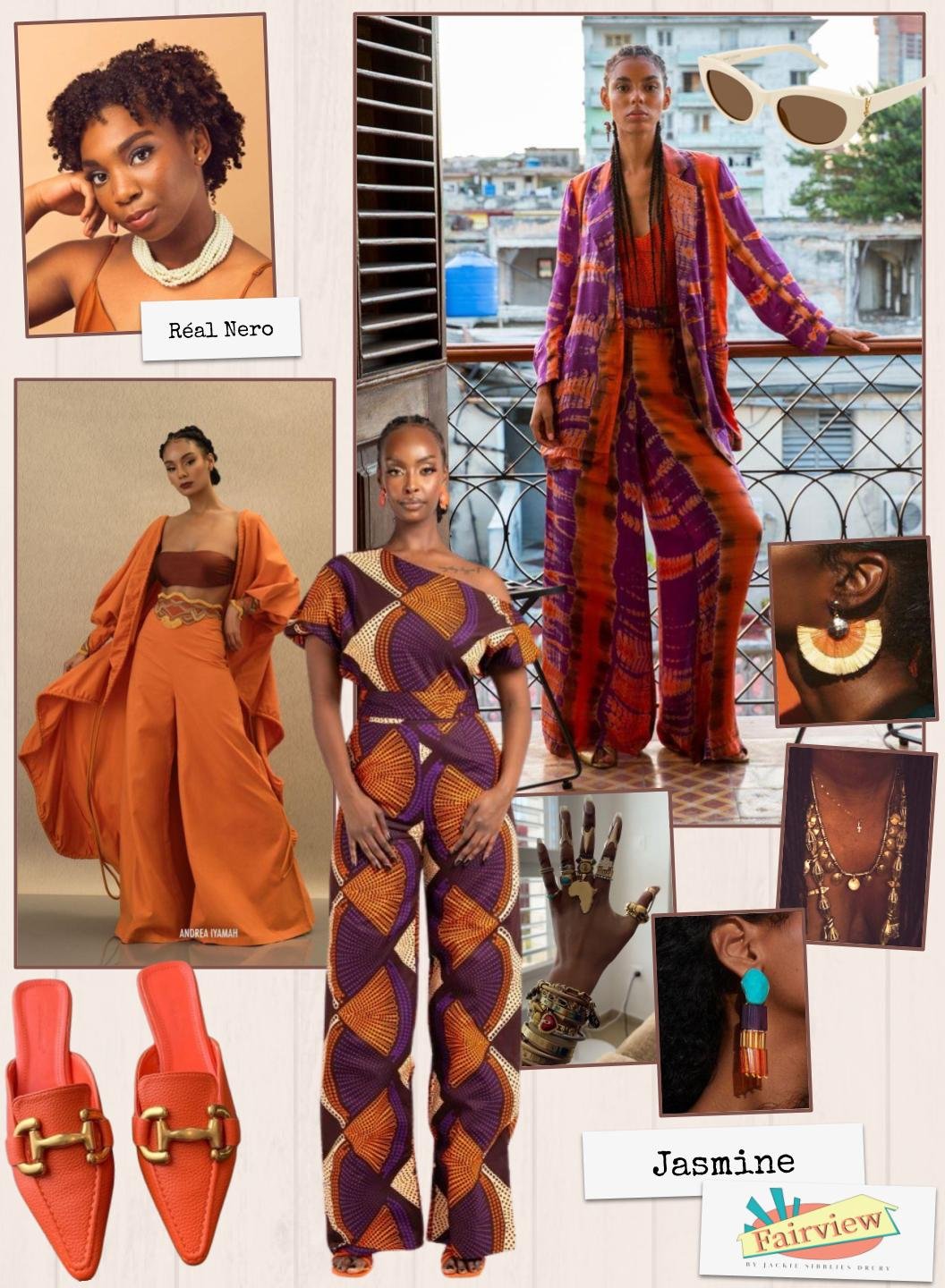







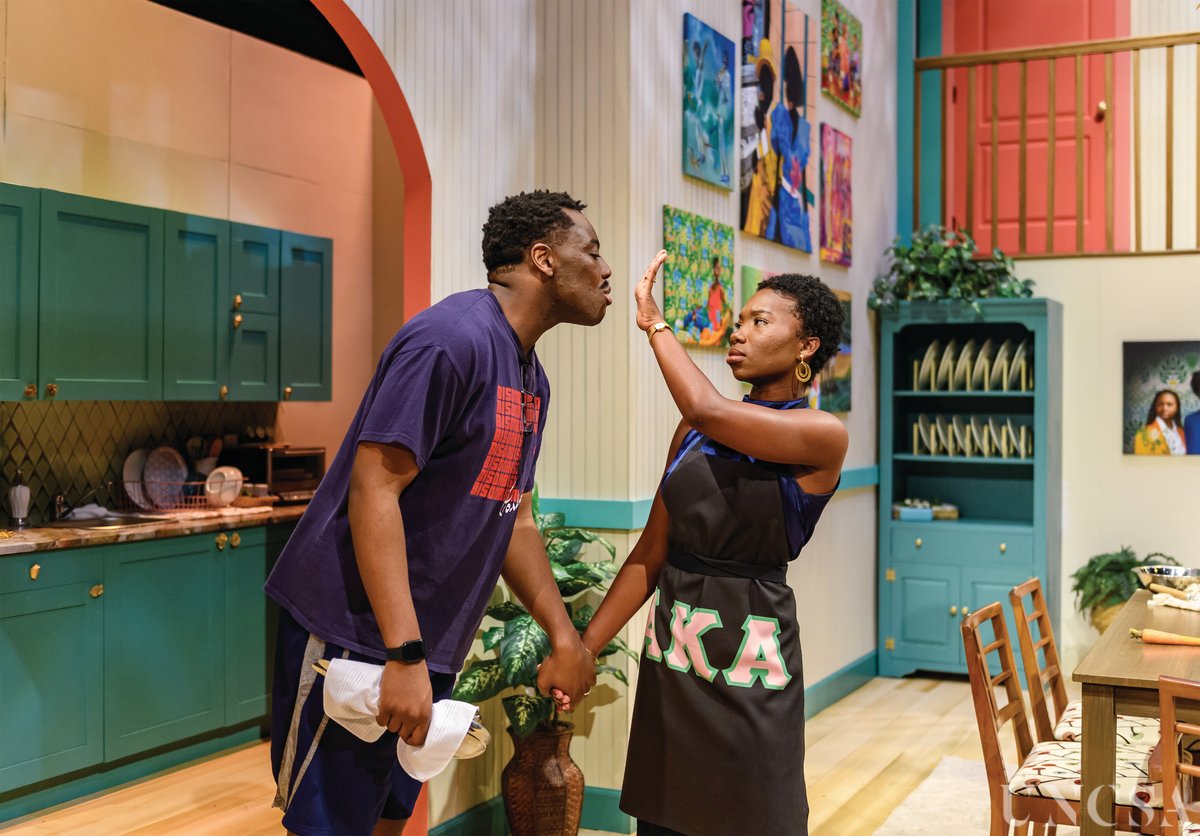




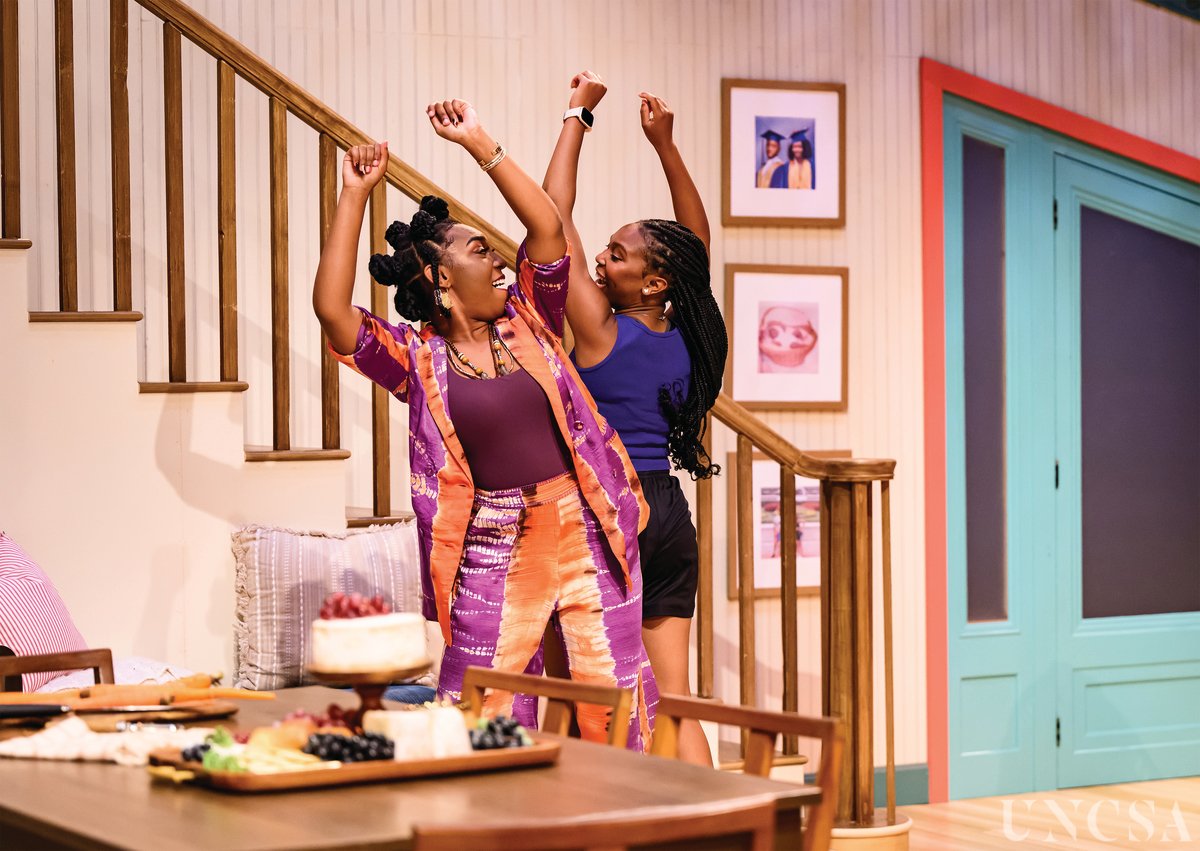

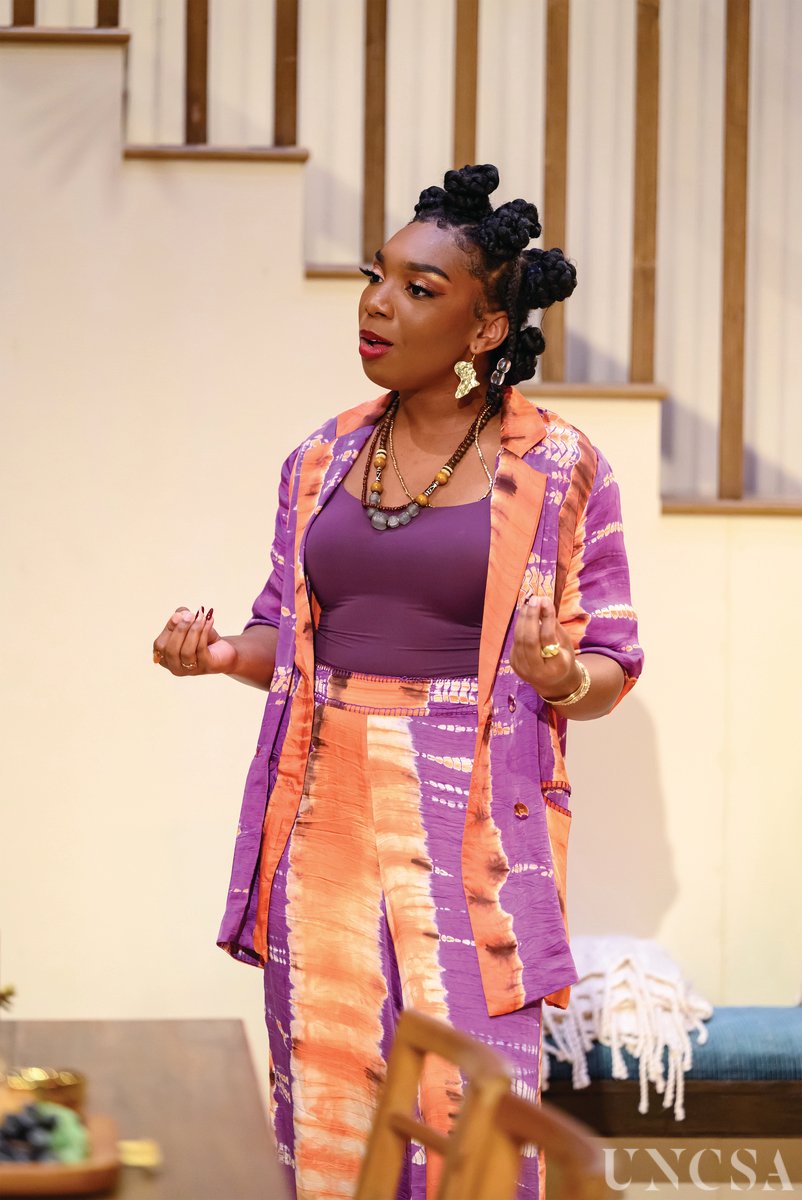













spoiler warning!
The following content contains major spoilers for the subject matter and plot of ‘Fairview’ acts 2 and 3. While I am proud to share these designs and the creative process behind them, I want to respect the integrity of the play and its creators’ intention for audiences to encounter the story organically. If you plan to watch or read ‘Fairview’ and wish to preserve the full experience, I encourage you to click away and return to this section after engaging with the play.
Proceed With Caution
The play acts as a commentary on the many ways racism persists and manifests in modern-day America. The playwright, Jackie Sibblies Drury, highlights four major archetypes: white liberalism/saviors (Suze), dismissive provocateurs (Jimbo), fetishizers (Mack), and detached “intellectualists” (Bets). After engaging in a conversation regarding changing races and aggressively commentating on the sitcom happenings of the Fraisers, this white cast assumes the roles of Black characters in the sitcom that reflect their thoughts on race. I took inspiration directly from the personal experiences I have had as a Black American and grounded the designs in pop culture references and stereotypical/caricature iconography.
Suze assumes the role of Grandma Fraiser, and her overly politically correct and self-righteous disposition leads her to unintentionally characterizing the grandmother as a mammy. Jimbo’s performative personality and lack of self-awareness become the basis of the look he dawns as Uncle Tyrone. There are clear influences from rap and R&B artists in his styling, however, rather than emulating the swagger he claims Black people have, his gaudy cheap jewelry and his outfit’s loud colors come off as obnoxious and dorky. Mack’s portrayal of Keisha’s best friend Erika highlights a tendency in white queer spaces to appropriate the mannerisms and fashions of Black women. Black rapstresses and Bratz dolls helped inform the look and channel Mack’s desire to be perceived as fabulous, wild, and crazy. Bets’ detachment from race reflects a common attitude amongst some Europeans who view racism as a solely American problem that they are above. While the other white cast members take (misguided) strides to intentionally look Black, Bets, who also decides to be Grandma Fraiser, prioritizes feeling sexy and sultry in her costume which is a bastardized take on 1920’s fashion- informed by her love of jazz. The choice to adapt both grandmothers’ gowns to be green was motivated by not only the desire to have them stand out against the home’s beige walls, but primarily by the desire to create a visual relationship between them and Keisha; the green unifies them but whereas Keisha’s moss green characterizes her as grounded, the mint green of Suze alludes to her passivity, and Bets’ deep emerald green presents her as bold and glamorous.
Concept Statement
Suze, as Grandma Fraiser:
“They would love me, if they met me.”
Draper: Sasha Goodner
First-Hand: Natalie Juran
Crafts Head: Audrey Pugh
Crafts Artisan: Avery Smith
Jimbo, as Uncle Tyrone:
“most Black people are really chill... There’s a swagger”
Draper: Sasha Goodner
First-Hand: Natalie Juran
Crafts Head: Audrey Pugh
Crafts Artisan: Elliott Hunter
Mack, as Erika:
“a drag version of a Black teenage girl”
Draper: Mackenzie Hughes
First-Hand: Elianna Gretok
Stitcher: Claire Gibbons
Crafts Head: Audrey Pugh
Crafts Artisan: Jasmine Cook
Sweatshirt Artists: Krista Commisso, Aman Mundle
Bets, also as Grandma Fraiser:
“Now, to sing jazz, that is a good reason to be a Black.”
Draper: Lauren Patrick
First-Hand: Zoe Rose
Crafts Head: Audrey Pugh
Crafts Artisans: Avery Smith, Elliott Hunter
‘Hipster’ Run Crew
To further empathize the play's critique of how white individuals often misunderstand or misrepresent Blackness, white run crew members assumed the roles of production staff on the sitcom set and were outfitted as stereotypical hipsters.



























































